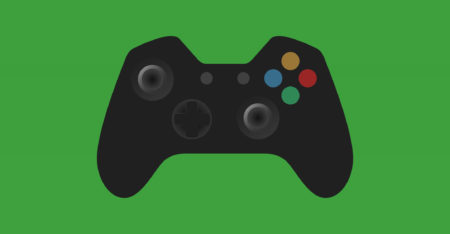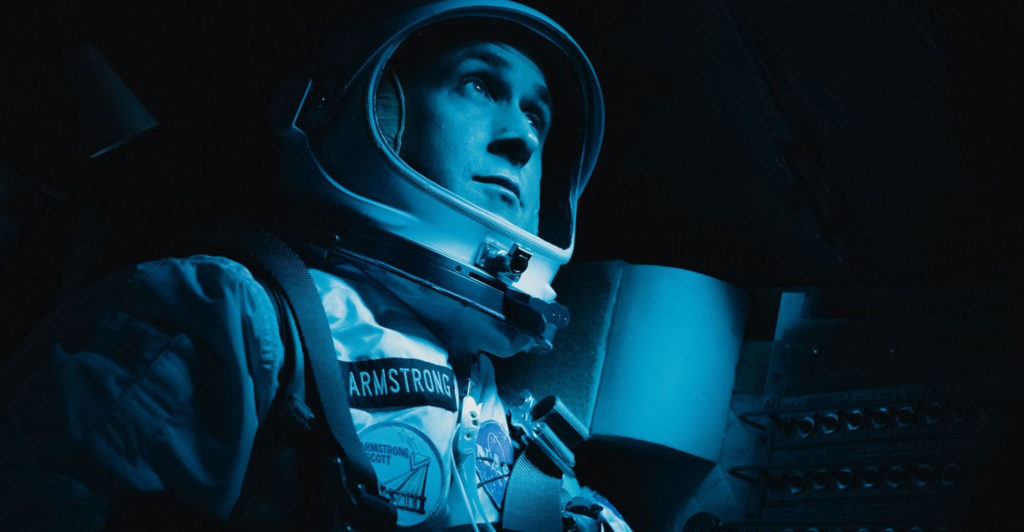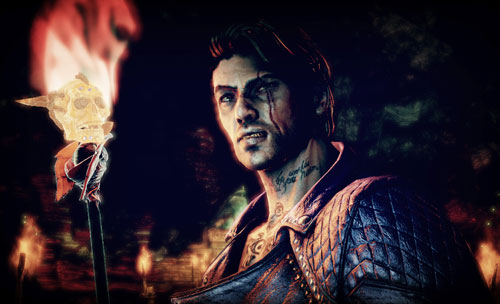
The idea of a game that pairs the eccentric style of No More Heroes designer Suda-51 with the gameplay suss of Resident Evil maestro Shinji Mikami sounds completely irresistible. For that reason, Shadows of the Damned, the new action-horror game published by Electronic Arts (EA), arrives burdened with expectations that it struggles to meet.
It’s somewhat unpolished and feels low-budget in execution compared to some of Mikami’s titles for Capcom. Character animations are stiff and there is plenty of ugly texture pop-in throughout the game. The occasional gameplay glitch will force you to reload the last checkpoint because killing off a room of enemies fails to trigger a cinematic or open a door so that you can progress.
But look past its rough edges and there is much to love in this game. It’s an idiosyncratic title that manages to blend the sensibilities of two of the most colourful minds in Japan’s videogame industry. There is heart, humour and imagination here that you will find in few big-budget shooters today.
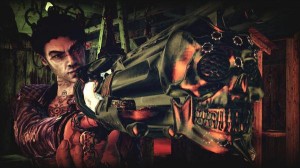
The scatological jokes, wacky visual style and fourth-wall busting pranks are pure Suda-51. From Mikami, the game gets its core shooting mechanics which are as tight as a drum skin. And Silent Hill composer and sound designer Akira Yamaoka contributes a wonderfully atmospheric score that ranges from hard metal riffs and classical Spanish guitar to eerie Angelo Badalamenti dreamscapes.
Shadows of the Damned has a videogame plot that is at least as old as Capcom’s Ghosts ‘n Goblins. The Prince of Darkness, who goes by the unlikely name of Fleming, kidnaps the girlfriend of demon hunter Garcia Hotspur.
Together with his sidekick — a floating skull called Johnson (“the right tool for every job”) who can transform into a range of weapons — Hotspur descends into hell to bring her back.
The strong sense of style is perhaps the quality that does most to set Shadows of the Damned apart from many of the other shooters of the market. The visuals and dialogue borrow equally from grindhouse cinema and classic videogames rather than striving for any sense of realism. This is a game that is proud to be a game rather than a “cinematic experience”.
And the none-too-bright Hotspur, whose Latino accent brings to mind Shrek’s Puss in Boots, and the mouthy, cowardly Johnson have more character than you’ll find in a shelf full of Western first-person shooters.
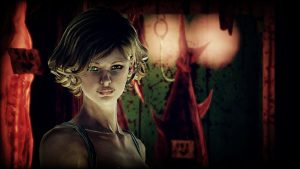
In many ways, Shadows of the Damned gets right what Duke Nukem Forever seemed to strive for and failed so miserably to achieve. Like Duke, it’s a videogame riff on the early films of John Carpenter and Sam Raimi as well as a throwback to the gameplay of 2005. And like Duke, it’s packed with enough swearwords and double entendres to make a sailor blush.
But where Duke is oafish and rampantly offensive, Shadows is boisterous and good-natured. Duke Nukem Forever merely aped its cinematic influences, but Shadows appropriates them. The biggest reason that Shadows of the Damned gets away with its adolescent posturing that it’s a good game under its edginess.
Shadows of the Damned plays much like Resident Evil 4 would if it had slightly more agile controls. Moving and aiming are fairly slow and deliberate compared to most third-person action titles, demanding a careful balance between aggression and defence.
Hotspur’s health drains away in the darkness, which is usually banished by finding a goat’s head on the wall (don’t ask why) and shooting it with Johnson’s light bullets. The demons Hotspur must fight are also difficult to kill in the dark. But the devillish twist is that Hotspur often needs to be in the shadow to shoot a particular switch or damage a boss. There’s a thoughtful balance between risk and reward in this darkness mechanic.
Shadows of the Damned NSFW trailer (via YouTube):
Of course, each of the game’s five acts features at least one confrontation with a boss demon. Although the boss fights are not particularly original, most of them are well designed and fun. They’re a reminder of how painfully bad most videogame boss encounters are. A few shooting gallery and 2D sidescrolling stages add some variety to the gameplay.
The game isn’t particularly challenging on the normal difficulty, apart from a couple of obnoxious difficulty spikes at the end. Though the core mechanics of the game are excellent, it could have done with a little more monster and weapon variety since it begins to feel repetitive about two-thirds of the way through.
Graphics 7/10
Shadows of the Damned’s visuals are a little rough around the edges, but there’s a distinctive sense of style in its grimy environments and grotesque demons.Sound 8/10
Cheerfully hammy voice acting and a great score from Akira Yamaoka.
Gameplay 8/10
Though Shadows runs out of surprises by the fourth of its five acts, fun boss fights and tight gunplay make it pleasure to play.
Value 6/10
A playthrough on normal difficulty will keep you busy for about eight to 10 hours, but there’s not much replayability to the game.
Overall 7/10
Shadows of the Damned is retro done right. For genre fans, this entertaining B-game is a solid buy, but it won’t be everyone’s tastes.
Shadows of the Damned is a low-profile game considering the constellation of Japanese videogame superstars that stands behind it. EA obviously had one look at all the weirdness on offer and decided that it would be a waste of money to market the game aggressively to Western audiences.
That’s a pity because the game deserves to sell better than it will. Games quite as individualistic as this are becoming rarer in today’s videogame industry. Sure, Shadows of the Damned isn’t a stone-cold classic like Mikami’s last game Vanquish, but that’s okay because it isn’t trying to be one. It wants to be relished in the same way as a good B-movie. Taken on those terms, it’s a terrific success. — Lance Harris, TechCentral
- Reviewed on Xbox 360. Also available on PlayStation 3
- Subscribe to our free daily newsletter
- Follow us on Twitter or on Facebook



